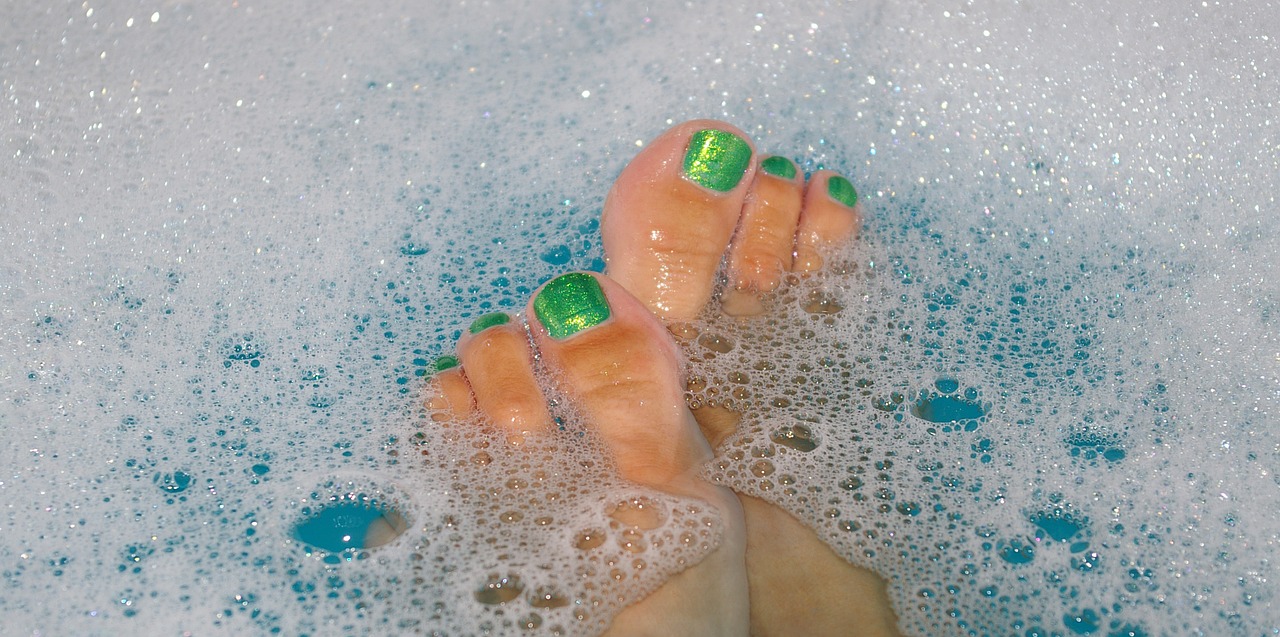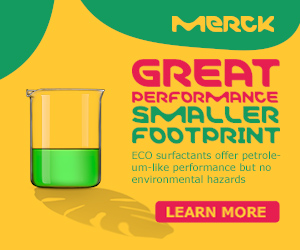Cosmetics & Personal Care
More than just soap and bubbles 20th November 2017
By our Editorial Team
Historically coming from natural plant sources, surfactants took a foray into synthetic products before recent consumer demand l

Historically coming from natural plant sources, surfactants took a foray into synthetic products before recent consumer demand led a return to natural and renewable ingredients. We look at the rise of bio-surfactants, and the broadening role of these chemicals in personal care products.
Soaps were the earliest surfactants – compounds that lower the surface tension (or interfacial tension) between two liquids, or between a liquid and a solid. Surfactants work by breaking down the interface between water and oils/dirt.1,2 They hold the oils/dirt in suspension, and so allow their removal. Surfactants can act in this way because they are amphiphilic, meaning they contain both hydrophilic groups (‘tails’) and hydrophobic groups (‘heads’). Molecules of water tend to be attracted to the tail, while water-insoluble material is attracted to the head.
Archaeological excavations have revealed that the ancient Babylonians were making soap from fats boiled with ashes around 2800 BC. Similarly, the Egyptians were mixing animal and vegetable oils with alkaline salts around 1550 BC, and the Phoenicians were using goats’ tallow and wood ashes to create soap in 600 BC. The Celts also made their soap from animal fat and plant ashes, naming it saipo, from which the word soap is said to have derived. Thus, the history of soap-making goes back many thousands of years, using resources from animals and nature.
The first synthetic surfactant was developed in the 1930s by Proctor and Gamble.3 The company believed the future lay with synthetic detergents and, for the next decade and a half, its researchers explored various ways to build the cleaning power of synthetic molecules. The result was Tide – the first heavy-duty synthetic detergent. The description of synthetic detergents as the first big change in soap making in two millennia was hardly an exaggeration. Tide was not just a new product, but a new kind of product. It was based on synthetic compounds rather than natural products. In the 1940s, synthetic detergents – with Tide in the lead – soon displaced traditional soaps throughout the United States.
Modern surfactants are of many different chemical types and do far more than simply producing foams and dispersing oils or dirt. They are classified as anionic (negatively charged: carboxylic acids, sulfates, sulfonic acids, phosphoric acid derivatives), cationic (positively charged: amines, alkylimidazolines, alkoxylated amines, quaternized ammonium compounds), amphoteric (positively and/or negatively charged: diacids and derivatives) and nonionic (no charge: alcohols, alkanolamides, esters and amine oxides).
The interfacial activity of these substances gives rise to a wide range of surface chemistry functions: wetting, emulsifying, solubilizing, foaming/defoaming, rheology-modifying, antistatic-ing, ’glossing’, lubricating and surface conditioning.2 Anionic surfactants are mostly used for cleansing and foaming, while cationic surfactants are used for conditioning. Amphoterics improve foam and reduce irritation, and nonionic surfactants (the most widely used surfactants in personal care products) serve as emulsifiers, conditioning ingredients and solubilizing agents.
Analysts recently suggested that the global market for surfactants is projected to reach $39.86 billion by 2021, registering a compound annual growth rate (CAGR) of 5.4% between 2016 and 2021.4 The projected growth of the surfactants market is based on a rising demand from the personal care industry. In particular, the analysts say the Asia Pacific will be the largest market during the forecast period up to 2021. The presence of a large consumer base and growing economies in this region result in high demand for personal care products – an important application segment of surfactants. Surfactants are fundamental ingredients in all cosmetic and personal care formulations to achieve various effects, such as thickening, reducing irritation, improving stability and imparting antimicrobial properties.
Currently, the global surfactants market is dominated by major players such as AkzoNobel (Netherlands), Air Products and Chemicals (USA), BASF (Germany) and Clariant (Switzerland), among others.4 These companies concentrate on new product development to enhance their market reach and make innovative products available to a large number of customers. In particular, an increasing awareness for environmentally-friendly products is driving the market for bio-based surfactants.
If they end up in the environment, surfactants may continue to work their amphiphilic effects on nature, with potentially damaging effects.1 For example, they may attack the natural oils in the mucus membranes of fish, stopping their gills from working properly, and some surfactant ingredients (e.g. nonylphenol ethoxylate, NPE) produce endocrine-disruptors, which can cause a variety of health problems in humans and animals. Therefore, while synthetic surfactants account for a major share of the market, demand for bio-based products is growing due to an increased inclination of consumers towards products made from natural sources.
Advances in biocatalysis, fermentation and other biological production methods are allowing the development of a range of ‘green’ surfactant chemistries, including amino acids, organic acids and carbohydrates. Examples include BASF’s algae-derived cosurfactant solution as an alternative to lauric oil, Bergasoft’s sugar-based, sulfate-free surfactants, and Clariant’s GlucoTain range of surfactants produced using Roundtable on Sustainable Palm Oil (RSPO)-certified palm and coconut oils. Most recently, Clariant has also launched GlucoPure Sense, a unique label-free surfactant based on 100% renewable sunflower oil, that was developed for hand dishwashing liquid detergents. Croda has also developed an ECO Range of 100% renewable and 100% bio-based surfactants derived from bio-based ethylene oxide that will be registered with the USDA BioPreferred program and, where they contain palm derivatives, will be RSPO-certified. EcoSense Surfactants from The Dow Chemical Company are examples of alkyl polyglucosides targeted for use in body washes, facial cleansers, liquid hand soaps and baby wipes – they are mild on skin and hair, sulfate-free and have been certified “natural” by Ecocert and the Natural Products Association. Biotensidon’s cost-effective mass production of rhamnolipids (bio-surfactants) was heralded as a major breakthrough at the beginning of 2017.
A number of companies are offering surfactant blends to facilitate product formulation efforts. Rita Corporation offers Ritafactant SFE, a sulfate-free blend that can be used in clear and opaque systems, while Stepan offers StepanBlend FF40, a sulfate-free anionic/nonionic/amphoteric product that provides good foam and viscosity build. Stepan also offers a series of Bio-Soft nonionic surfactant blends, and Wacker’s silicone fluid emulsion BELSIL DM 5700 E contains nonionic surfactants based on renewable raw materials. AkzoNobel and Itaconix recently signed an application agreement to evaluate and develop innovative bio-based chelates for use in the consumer and industrial detergents and cleaners markets. Other companies offering green or milder alternatives to synthetic surfactants include Cedar Concepts, Galaxy Surfactants, Lonza Consumer Care, Lubrizol Advanced Materials and Seppic.
No doubt the dynamics of the growing surfactants industry and the future growth of the business is going to keep our attention for years to come. From growing commodity surfactants to new emerging specialities, the challenges and opportunities of the surfactants industry are many and varied. But – as in many industries – it seems fair to say that much innovation is centring around sustainability and a ‘greener’ footprint. A trend for developing greener alternatives for conventional ingredients will address a growing consumer demand for natural products. Having experienced a brief foray into synthetics, these products are returning to their historic roots of natural sources and their origins of renewable ingredients.
References
- C Woodford. ExplainThatStuff.com, e-published 21st June 2017.
- 2. T Hargreaves. Chemical World, e-published 1st July 2003
- American Chemical Society. The Development of Tide, 2006.
- Markets&Markets. Surfactants Market, www.marketsandmarkets.com/Market-Reports/biosurfactants-market-493.html.



